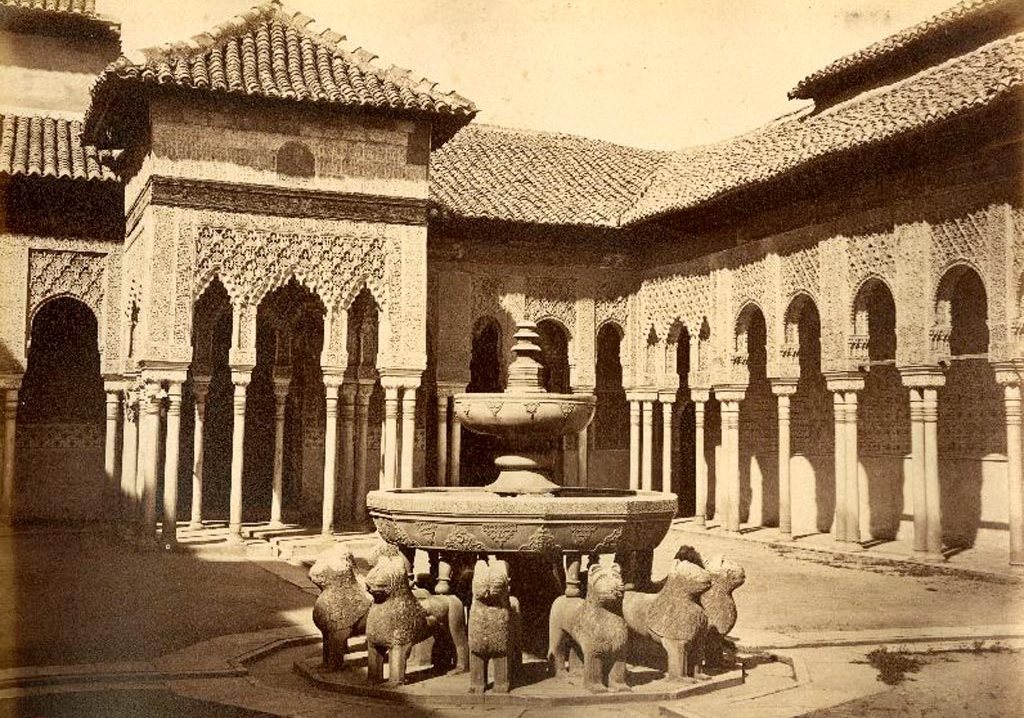Voices of women travellers at the Alhambra
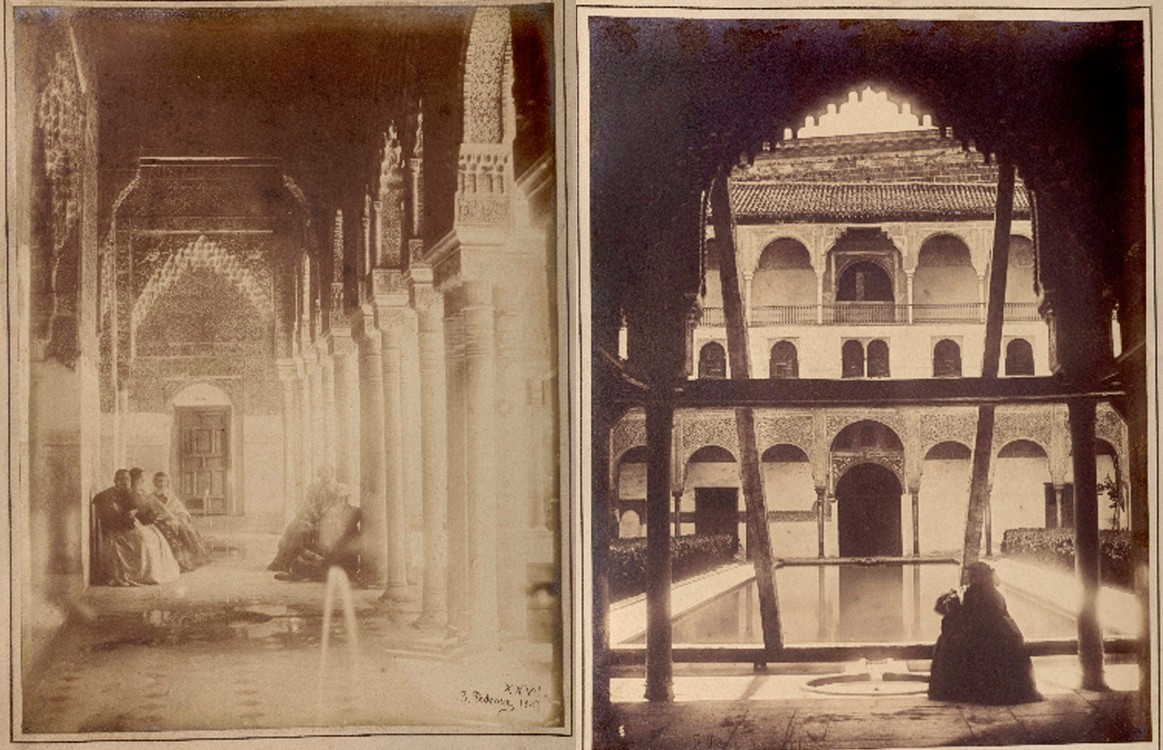
The city of Granada was a recurring theme in Romantic literature and (mainly
French and British) foreign authors used it as a textual framework and literary motif, enjoying the experience of discovering the Nasrid city first-hand through their travels. The result of their individual and intimate gaze is a whole literary corpus that together is described as “travel literature”, a highly popular genre among readers that has contributed to creating an idealised image of Granada in people’s minds.
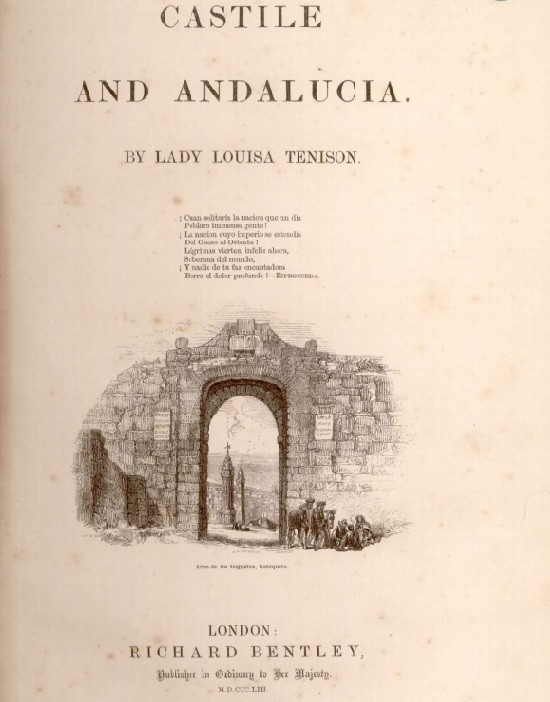
““We rode hastily to the crest of the hill ahead, eager to get our
first view of Granada, and glorious indeed it was, for the
setting sun was just then making its golden light fall upon the
distant towers of the Alhambra, and the regal city rose before
us with its crown of mountains, while the Vega lay like a green
carpet at its feet” (Lady Louisa Tenison).
Here I would like to point out that a female gaze was also seduced by Granada
and the Alhambra in particular, resulting in a series of texts that capture their experiences as “romantic travellers”. These descriptive texts are accounts of the steps taken by intrepid women travellers and the sensations they experienced when confronted by overwhelming beauty. In addition, they echo the full catalogue of popular legends that revolve around the Nasrid palace and that have been such an inspiration to novelists and poets.
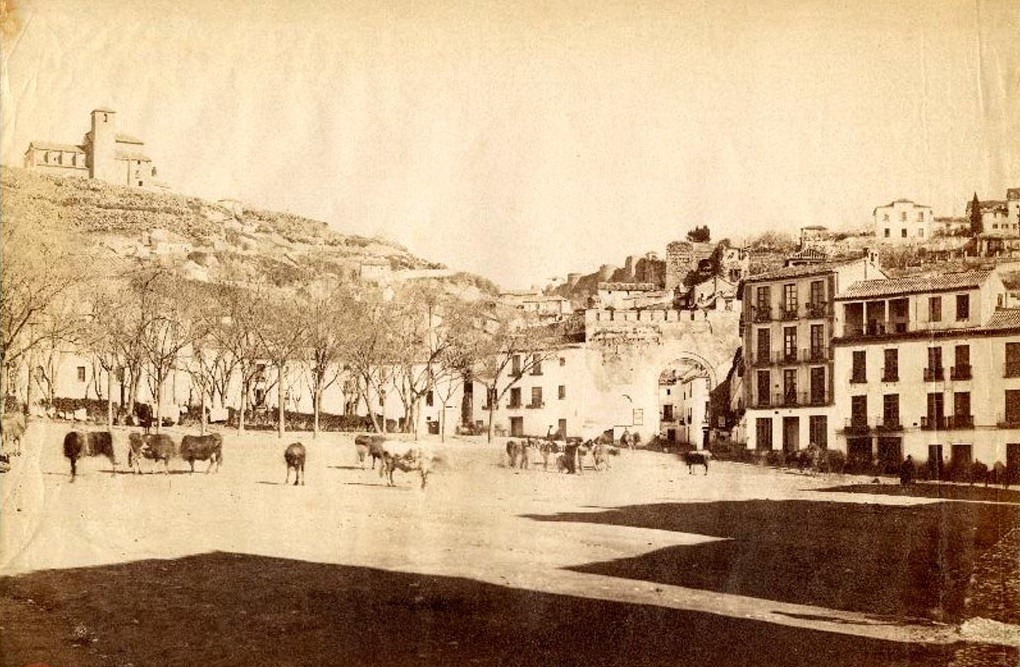
“Who can enter the Moorish capital without being moved? –
the city whose foundations are in the hills and whose conquest led to a beautiful page in history. The most apathetic traveller is thrilled when the carriage speeds through the Gate of Elvira, and an intense sense of excitement is felt when, after ascending steep Calle de los Gomeles, a pause is made before reaching the Gate of Charles V, for within this gate are the domains of the Alhambra. Forests of elms and poplars, avenues covered with tall boughs line the steep ascent from this gate, and crowning the heights are the reddish towers of the ancient Arab fortress” (Mrs. W. A. Tollemache).
Incidentally, a study by researcher María Antonia López-Burgos includes twelve
women travellers who visited the Alhambra and wrote about it during the 19th century, expressing not only of their view of Granada and its past, but also the state of the Alhambra in their present. This makes these texts a source of historical information on the conservation and evolution of the monument, the result of painstaking restoration work.
“We arrived at the Gate of the Pomegranates, a beautiful arch from the time of Charles V, with pomegranates and eagles with open wings, carved in the stone; an open pomegranate is the emblem of Granada” (Elizabeth Mary Grosvenor)
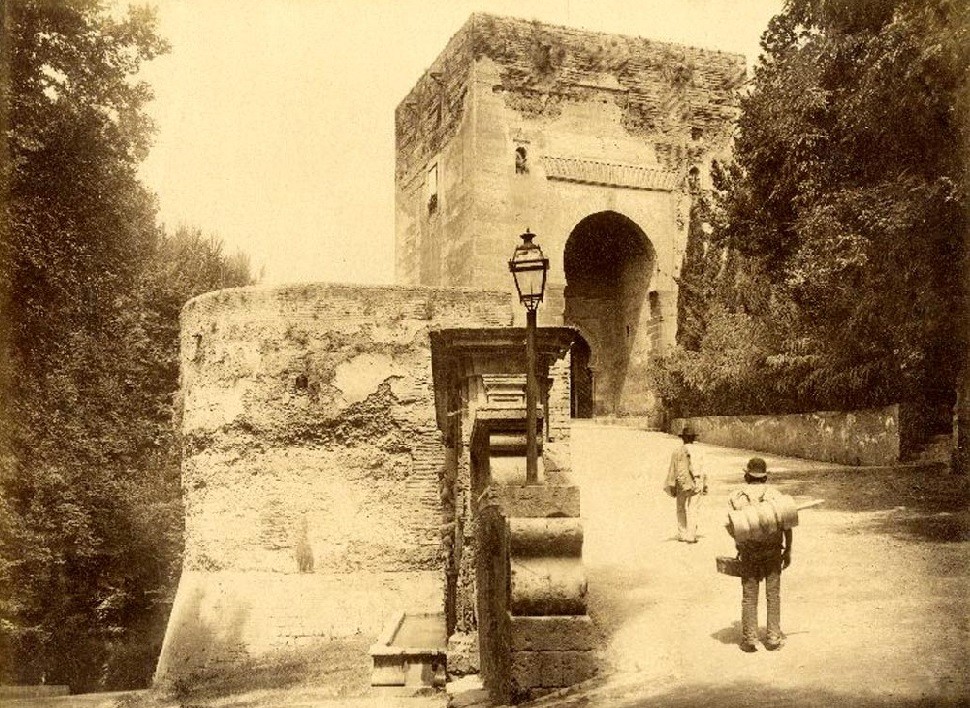
These texts are essentially descriptive in nature, chronicling the physical forms
that the travellers contemplated with admiration and astonishment, and the ethereal forms of the emotions that were produced in their souls. As a result,
images and sounds were indelibly engraved in their memories and in the ink that flowed from pen to white paper. Now, centuries later, through a reading experience that never less than magical, it is possible to relive their experiences, touring and feeling the Alhambra as these intrepid authors and romantic travellers did.
“The Darro ran below to our left and the fountains everywhere
sent us their fresh, gurgling song. This delightful shade, the sweet music and the refreshing harmony of waters do not leave you until you reach the grand entrance of the Alhambra: the Tower of Justice. Here we turned to our right and continued for a little longer under this delightful shade as we first visited the Generalife? (Dora Quillinan).
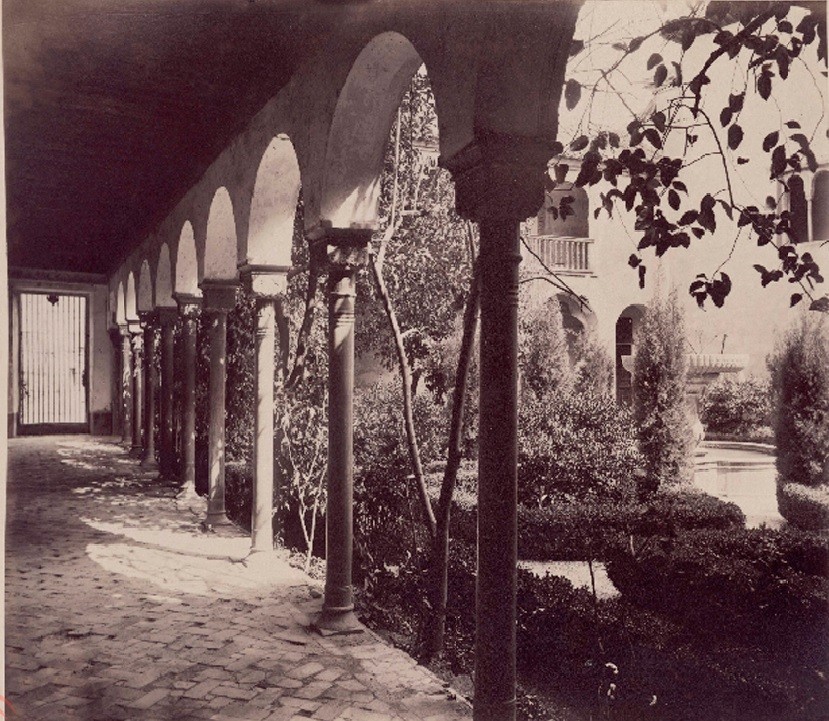
The aim is to shed light on a feminine gaze that has been cruelly cast into the
shadows of history. Those few globetrotters of yesteryear breathed a spirit of adventure into the many curious and brave travellers who today write their own exploits. The stories of these women allow us to travel back in time, to travel along paths that still remain today, to trace the footsteps of a giant called Romanticism, to share their experiences, longings and feelings.
Now you are the protagonist and the world wants to see through your eyes, and
feel what you feel, and walk holding your hand through every corner of the Alhambra.
“We don´t know what to admire more in this small but exquisite magical kingdom. Like little girls at a fair who clap their hands and laugh with joy every time they see a new toy, shouting, “This one is better, no, this one, no, this one!” We moved from courtyard to courtyard, room to room, declaring that one rivalled the other as we moved forward. For a moment I maintained that the Lindaraja Courtyard had the upper hand, at another moment that it was La Alberca Courtyard, but each one is so perfect in its own way that it is almost impossible to have a preference for any one in particular. The view of the Alberca is very nice on a sunny day. The first time we saw it was when the sun was playing on the water and there were magical rainbow-coloured reflections on the delicate alabaster columns. But everything is magical, the Courtyard of the Lions, the Baths, the Hall of Ambassadors, the Mosque, the Hall of two Sisters; the gardens of the Generalife...” (Matilda Betham-Edwards).
Women travellers at the Alhambra:
-
GROSVENOR, Elizabeth Mary, A Narrative of a Yacht Voyage in the
Mediterranean during the Years 1840-41. - ROMER, Isabella Frances, The Rhone, the Darro and the Guadalquivir (1843)
- QUILLINAN, Dora, A Journal of a Few Months’ Residence in Portugal, and Glimpses of the South of Spain (1845)
- TENISON, Lady Louisa, Castile and Andalucia (1853)
- STUART-WORTLEY, Lady Emmeline, The Sweet South (1856)
- HERBERT, Lady Elizabeth, Impressions of Spain in 1866 (1866)
- EDWARDS, Matilda Betham, Through Spain to the Sahara (1868)
- TOLLEMACHE, W.A., Spanish Towns and Spanish Pictures (1869)
- JACKSON, Mary Catherine, Word-Sketches in the Sweet South (1873)
- HARVEY, Annie, J., Cositas Españolas or Every Day Life in Spain (1875)
- RANSAY, Mrs., A Summer in Spain (1874)
- MOULTON, Louise Chandler, Lazy Tours… in Spain and Elsewhere (1896)
Bibliography:
López-Burgos del Barrio María Antonia (2007). Viajeras en la Alhambra. Signaturas Ediciones de Andalucía, S.L. (Consejería de Turismo, Comercio y Deporte. Junta de Andalucía).





 Contact
Contact






